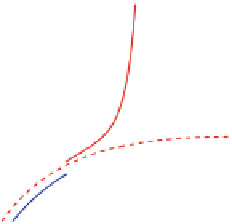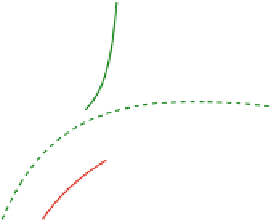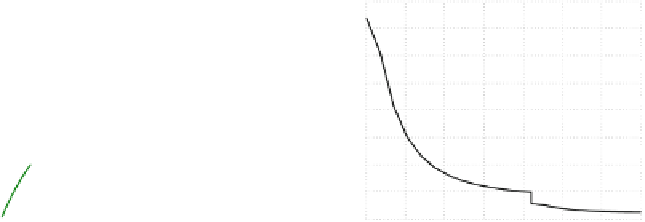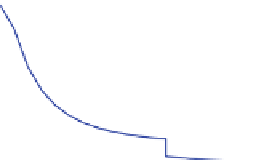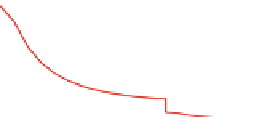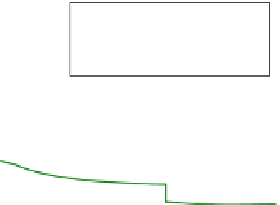Biomedical Engineering Reference
In-Depth Information
6.2 Inflation of the Perturbed Tube
We continue with a study of the pressure-driven inflation problem of the perturbed
tube. First, we focus on the elastic response and the effect of the residual stresses on
the overall behaviour of the structure. Due to the symmetry of the inflation problem,
it is sufficient to consider only one quarter of the perturbed tube resulting in 3,000
finite elements, as shown in Fig.
2
.
6.2.1 Elastic Response
Figure
4
a shows the load-displacement diagram in terms of the internal pressure
p
over the radial displacement
u
r
i
at the inner radius of the tube at
z
L
2
.
Two different elastic solutions are shown: the isotropic neo-Hookean matrix in the
lower dotted curves, and the overall elastic response composed of the neo-Hookean
matrix
and
the fibre reinforced material in the upper solid curves. These curves give
a good illustration of the highly non-linear material behaviour especially at large
strains. As a consequence of the residual stresses, we basically obtain two significant
effects. First, we observe a shift towards negative radial displacements. Secondly,
we observe a shift towards higher pressure values. Both effects are directly related
to the contraction of the tube due to the residual stresses. The contraction basically
implies a change in the configuration in which the pressure is applied, i.e. for a
reduced inner radius a larger pressure must be applied in order to obtain the same
radial displacement. This is qualitatively in line with the solution for thick-walled
cylinders under internal pressure in linear elasticity.
=
L
1
+
(a)
(b)
20
400
M
=0[deg]
,
A
=0[deg]
350
M
=45[deg]
,
A
=90[deg]
15
300
M
=60[deg]
,
A
=120[deg]
M
= 120 [deg]
,
A
=160[deg]
250
10
200
150
5
100
50
0
0
-0.5
0
0.5
1
1.5
0
0.1
0.2
0.3
0.4
0.5
0.6
0.7
u
r
i
[mm]
H
[mm]
Fig. 4
Perturbed tube subjected to internal pressure and residual stresses. Variation of different sets
of opening angles
n
.
Solid lines
represent the response of the fibre-reinforced material,
dotted lines
represent the response of the neo-Hookean matrix at
z
=
L
1
+
L
2
.
a
Pressure
p
versus inner radial
displacement
u
r
i
,wherethe
grey region
represents the physiological pressure range;
b
distribution
of the circumferential Cauchy stress
ʱ
˃
ʸ
along the undeformed thickness
H
at
p
=
13
.
33 [kPa]

